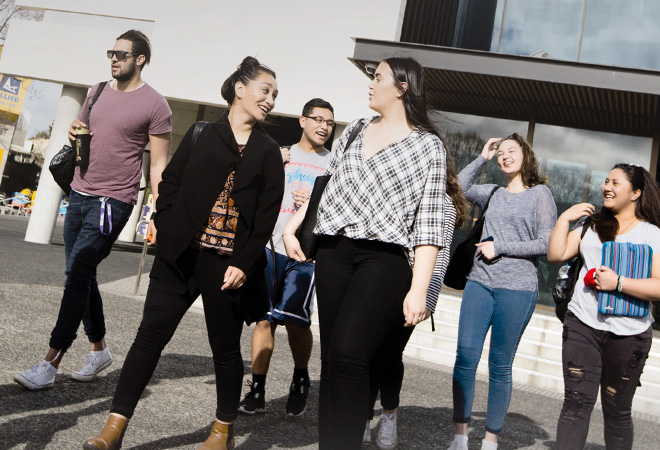
Weaving our worlds: Māori learner outcomes in health science
Status
Completed: 4 December 2016
Project Details
A three-phase project to implement and evaluate the delivery of a quality-improved Te Whakapuāwai in 2014 and 2015. Te Whakapuāwai is a programme set up to support the academic achievement of students enrolled in Māori Health Sciences First Year (HSFY) studies at the University of Otago.
Aims:
The aims of this project are to:
- refine, implement and measure the impact of a comprehensive programme that is culturally-responsive and encompasses peer-assisted metacognitive development and/or accelerated group study skills on Māori HSFY students (both qualitative experiences and academic and educational outcomes)
- undertake programme delivery and research within the context of an equity focus seeking to improve the educational outcomes and experience for all Māori HSFY students including those from lower socio-economic backgrounds and/or lower decile schools
- advance understanding of best practice when addressing structural disadvantage, institutional and cultural responsiveness and student learning theory specific to Māori learners
- disseminate knowledge of critical success factors and effective practice to enhance Māori student learning development, achievement and retention in higher education in a manner that is accessible for others (practitioners, students, whānau, community and organisations)
- support institutional change by embedding findings into practise and promoting broader applications locally, nationally and internationally
- demonstrably increase the number and diversity of Māori students successfully progressing through HSFY at the University of Otago.
Methodology:
The Weaving Our Worlds project is being undertaken in three phases.
Phase one (2014): background and piloting
- An overview of the background, implementation and outcomes of Te Whakapuāwai between 2011-2013.
- Background information on how and why the enhanced Te Whakapuāwai programme was developed for delivery to Māori HSFY cohorts in 2014 and 2015.
- More detailed theoretical and operational aspects of this enhanced programme and its delivery in 2014.
Phase two (2014-2015): review, quality improvement and outcomes analysis
- Review of the pilot of the Weaving our Worlds intervention and the process of quality improving the intervention based on findings.
- Preliminary outcomes data for the 2014 and 2015 Māori HSFY student cohorts following implementation of the enhanced Te Whakapuāwai programme.
More detailed statistical comparative analysis (encompassing 2016 data) was to be undertaken in early 2017 as part of phase three of the project.
Team

Associate Professor Joanne Baxter
Project Leader
University of Otago
Zoë Bristowe
University of Otago
Sarona Fruean
University of Otago
James Meager
University of Otago
Anna Dawson
University of OtagoStatus
Funding
$357,923.00 (excl GST)
Key Findings
Findings on Te Whakapuāwai (2011-2013)
- An evaluation after the first 18 months indicated that Te Whakapuāwai was a successful programme.
- It increased the number of Māori students passing HSFY papers and gaining entry into Health Professional degrees when compared to previous years.
- It resulted in a high degree of student participation and satisfaction.
- However, despite a trend of improved Māori student outcomes overall, this improvement was not distributed evenly across Māori students and those students.
- Students who were relatively educationally and socioeconomically disadvantaged remained less likely on average to succeed academically in HSFY.
Findings on Te Whakapuāwai (2014-2015)
- Student feedback and evaluations of the enhanced programme was overwhelmingly favourable.
- Analysis of outcomes for Māori students in HSFY (2014-2015) for key indicators of importance for HSFY (semester one, semester two and across the year) showed the picture for outcomes was complex.
- For around two-thirds of Māori students overall outcomes were positive.
- For around one-third of the students outcomes were more mixed.
- Analysis of Māori student backgrounds highlighted the overlapping nature and complex interplay of home and school backgrounds.
- For HSFY, access to secondary school sciences was highlighted as an issue for many Māori students.
- When 2014 and 2015 HSFY Māori student outcomes were measured comparing students from different socio-economic and science preparation backgrounds, the findings showed better outcomes among students who attended higher decile schools, were from areas of lower relative deprivation and had greater NCEA Level 3 science attainment.
- Despite this trend, analysis indicated that there were many positive outcomes for Māori students from across diverse backgrounds and for some papers such as CHEM191 and PHSI191 the ‘gap’ was closing.
- Comparisons among Māori students between years showed that for CELS191, CHEM191 and PHSI191 Māori outcome improvements were greater than would be expected on the basis of non-Māori and non-Pacific student outcomes.
- This was particularly so for students who attended school deciles 1-5.
Key Recommendations
Further analysis of 2016 academic year will allow for a robust testing of the hypothesis that the enhanced programme is effective in meeting the needs of Māori students across diverse backgrounds and will result in recommendations.
Report
Weaving our worlds
A report prepared by Zoë Bristowe, Joanne Baxter, Sarona Fruean and Anna Latu.
- 4 December 2016